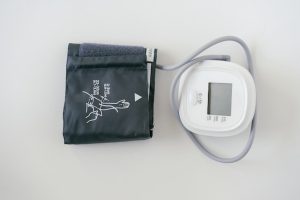
Blood Pressure Natural Solution
Blood Pressure Natural Solution
Six natural ways to lower blood pressure
According to the Centers for the Disease Control and Prevention, one in three adults in the United States has high blood pressure. This means that the force of the blood pressure on the arterial walls is too high, damaging the arteries and significantly increasing the risk of heart attack, stroke, heart failure, and kidney failure.
Reducing systolic blood pressure to a maximum of 120 mmHg has been shown to reduce this risk. There are two ways to achieve this: lifestyle changes and medication. While some people can lower their blood pressure through lifestyle changes alone, the two methods are complementary.
Blood Pressure Natural Solution

How to lower blood pressure naturally
The term “lifestyle changes” means you must change your habits to lower your blood pressure. These adjustments are natural – non-pharmacological – ways to lower blood pressure. Six methods are effective in clinical studies, and two more are recommended:
-
Reduce your salt intake
Reducing salt intake is perhaps the most important way to lower blood pressure. Many studies have shown that a low-sodium diet has the same effect as one and a half to two blood pressure medications,” says Dr. Lavigne.
The average American consumes 3,500 mg of a sodium per day — far more than the American Heart Association’s recommend of no more than 1,500 mg, or about a teaspoon of salt. Because this amount is so strict, the Cleveland Clinic has set the limit at 2,300 mg. “The difference in effect is only a drop of 2 to 3 mmHg,” says Dr. Lavigne. “At the very least, we recommend reducing your sodium intake by at least 1,000 mg per day.”
Since sodium is hidden in many foods, avoiding sodium is difficult unless you cook everything from scratch at home; never eat and avoid processed foods of any kind, including bread. But it is possible. “It takes 10 to 14 days to adapt to a low-sodium diet; then some foods start to taste salty, says Dr. Levine.
The effect: Limiting sodium to 1,500 mg daily should lower your blood pressure by 5 or 6 mmHg if you have high blood pressure.
-
Consume more potassium
A diet rich in fast food, processed foods, carbohydrates, potatoes, and meat is likely low in potassium, contributing to high blood pressure. Getting 3,000 to 3,500 mg of potassium per day is recommended through foods such as bananas, tomatoes, and other vegetables.
If you have severe kidney disease, you should be careful not to consume too much potassium because your kidneys may be unable to eliminate it, says Dr. Lavigne.
The effect: If you have high blood pressure, increasing your potassium intake to recommended levels should lower the blood pressure by 4 to 5 mmHg.
-
Adopt the DASH diet
The Diet to Stop Hypertension (DASH) diet was created to lower blood pressure. Focuses on fruits, vegetables, whole grains, and low-fat dairy products. People who follow the DASH diet usually stick to the low-sodium and high-potassium guidelines and may also lose weight. Research on this diet is so positive that it is now considered one of the essential non-pharmacological measures to control high blood pressure.
Effect: The DASH diet can lower systolic pressure by up to 11 mmHg.
-
Lose weight
Excess weight increases the risk of developing high blood pressure. More than half of adults in the United States are overweight. So losing any amount of weight is a good thing.
Effect: Each loss of 2.2 pounds should result in a one mmHg drop in blood pressure.
-
Limit alcohol use
Men should limit alcoholic beverages to two drinks a day. Women should not have more than one per day.
The effect: If you have high blood pressure and regularly drink more alcohol than recommended, reducing your intake may lower your blood pressure by four mmHg.
-
Get physical
Physical activity, especially aerobic activities, is very effective in lowering blood pressure. Aerobic exercise forces blood vessels to dilate and contract, making them flexible. It also increases blood flow and encourages the formation of new blood vessels, among other benefits.
The effect: 150 minutes of aerobic activity per week can lower blood pressure by 5 to 8 mm Hg.
Other options include dynamic resistance exercises, such as biceps exercises with weights, and isometric resistance exercises, such as pushing against a wall. How much blood pressure is likely to be lowered depends on how often it is performed, how many repetitions it is completed, with dynamic resistance exercises, and the weights used. They can lower blood pressure by 4 to 5 mmHg.



